Click here and press the right key for the next slide (or swipe left)
also ...
Press the left key to go backwards (or swipe right)
Press n to toggle whether notes are shown (or add '?notes' to the url before the #)
Press m or double tap to slide thumbnails (menu)
Press ? at any time to show the keyboard shortcuts


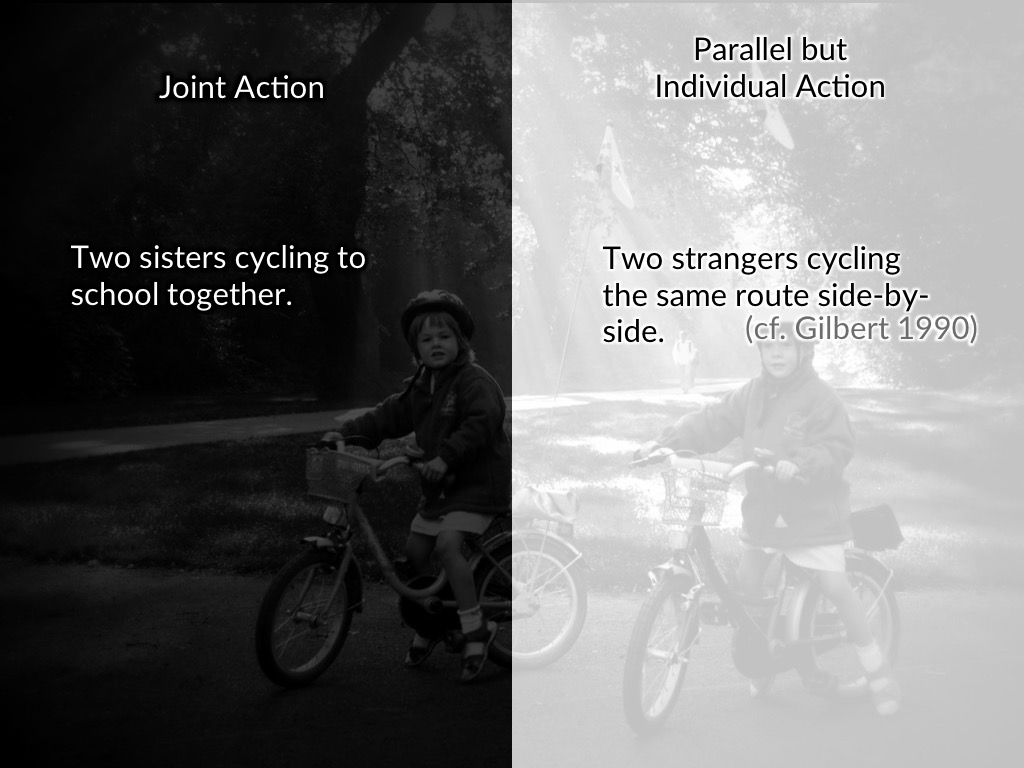
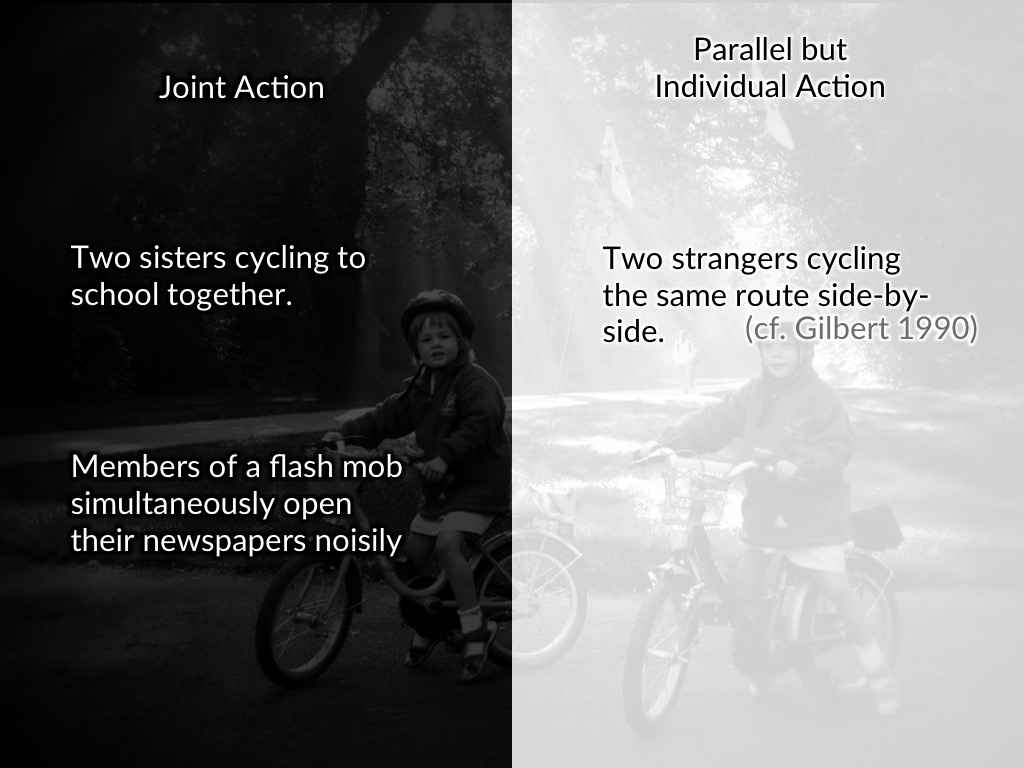
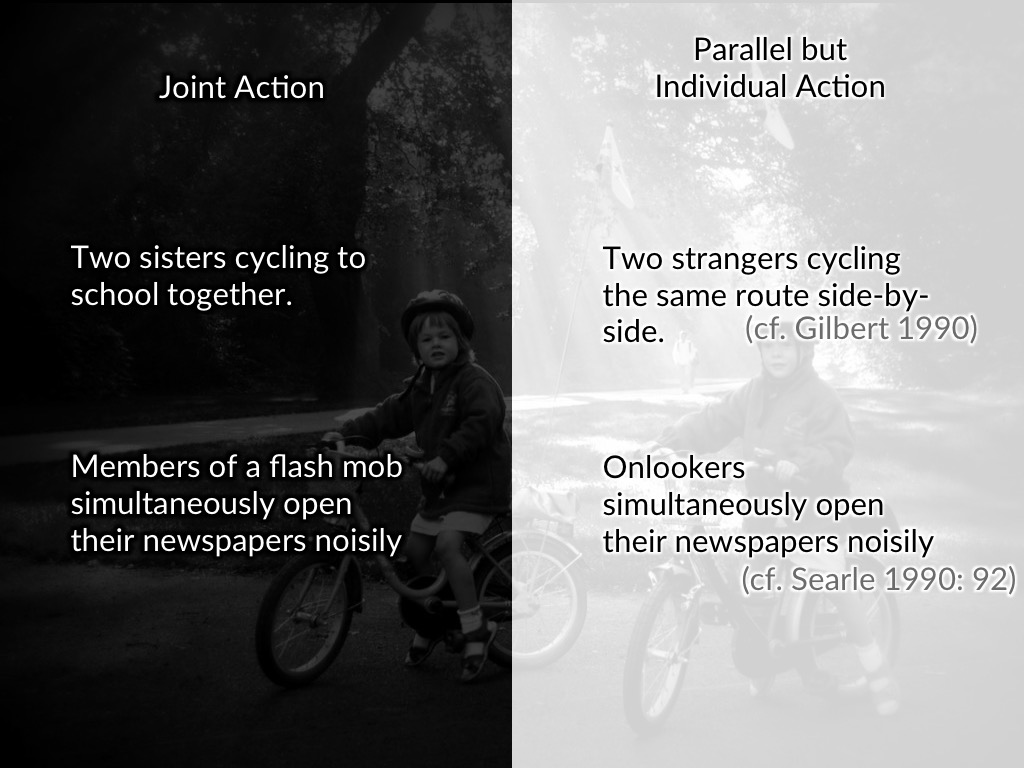
Give another contrast pair.

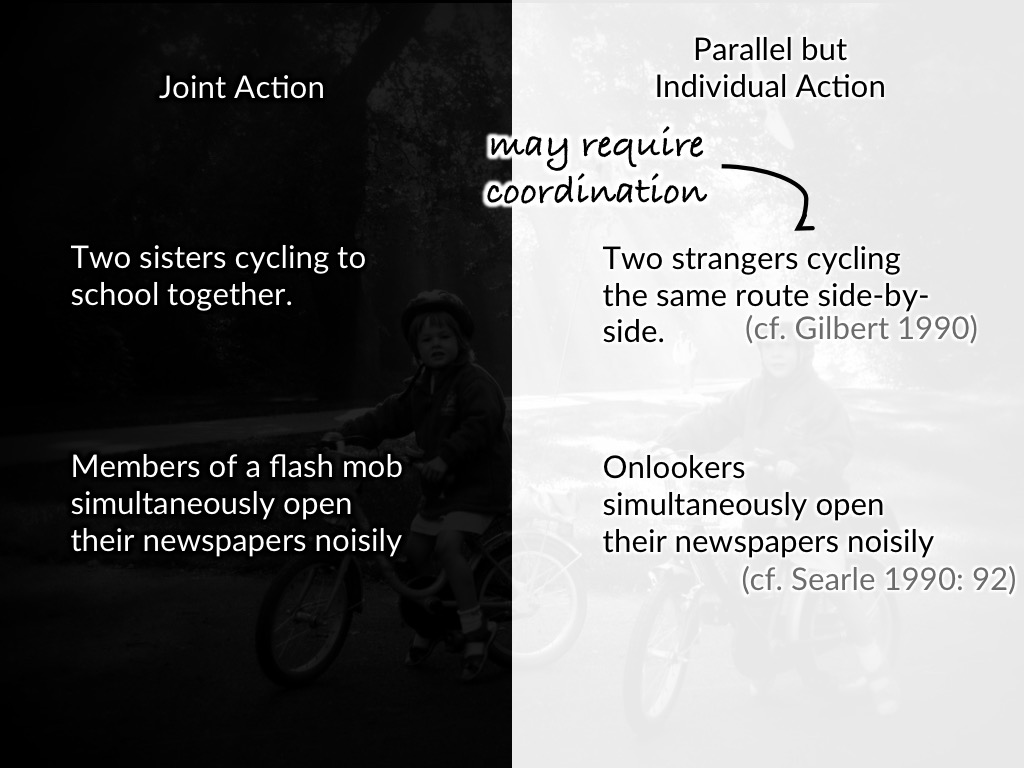
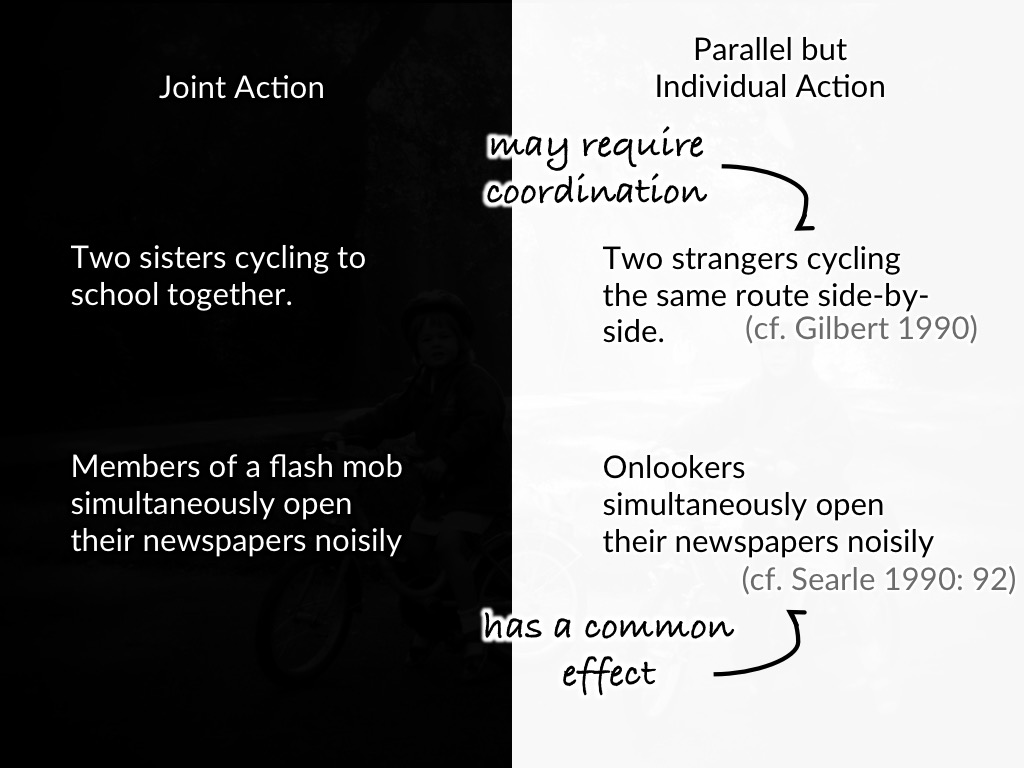
Question
What distinguishes genuine joint actions from parallel but merely individual actions?
Requirement
An account of joint action must draw a line between joint actions and parallel but merely individual actions.
Aim
Which forms of shared agency underpin our social nature?
Individual vs Aggregate -- both miss shared agency

Admin
first writing task
https://yyrama.butterfill.com/course/view/JointActionBochum
Short (<501 words) writing assignment.
What is the Simple View? First carefully introduce the question about joint action to which the Simple View is supposed to be an answer. Then introduce and evaluate an objection to it. ...
Also: provide a peer review of another student’s work.

The Simple View

We each intend that we, you and I, cycle to school together.
What distinguishes
an ordinary, individual action from a mere happening?
Your intention that you throw the coffee at me.
What distinguishes
genuine joint actions from parallel but merely individual actions?
Our intentions that we, you and I, cycle to school together.
The Simple View
Two or more agents perform an intentional joint action
exactly when there is an act-type, φ, such that
each agent intends that
they, these agents, φ together
and their intentions are appropriately related to their actions.
Objection?

The Circularity Objection

We each intend that we, you and I, cycle to school together.
‘[H]ow can an individual refer to a joint activity without the jointness [...] already being in place?’ (Schweikard and Schmid, 2013)
Contrast:
We each intend that we, you and I, cycle to school together.
We each intend that we, you and I, cycle to school apart.
acting together vs exercising shared agency

Are Ayesha and Beatrice
acting together?
Is Ayesha and Beatrice’s
lifting the block together
a joint action?

We each intend that we, you and I, cycle to school together.
‘[H]ow can an individual refer to a joint activity without the jointness [...] already being in place?’ (Schweikard and Schmid, 2013)
terminology:
shared agency
joint action
‘collective’ action / agency
---
acting together

Walking Together in the Mafia Sense

The Simple View
Two or more agents perform an intentional joint action
exactly when there is an act-type, φ, such that
each agent intends that
they, these agents, φ together
and their intentions are appropriately related to their actions.
Bratman’s ‘mafia case’
1. I intend that we, you and I, go to NYC together.
2. You intend that we, you and I, go to NYC together.
3. You intend that we, you and I, go to NYC together by way of you forcing me into the back of my car.

conclusion
Objectives for this lecture:
- understand questions about shared agency
- can use the method of contrast cases
- familiar with the Simple View
- can critically assess objections to the Simple View [tbc]
Question
What distinguishes genuine joint actions from parallel but merely individual actions?
Requirement
An account of joint action must draw a line between joint actions and parallel but merely individual actions.
Aim
Which forms of shared agency underpin our social nature?